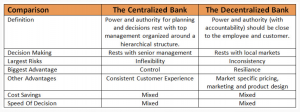


The second blockchain technology got renowned (thanks to Bitcoin), the entire global financial system became one big baffling question. The global financial system, as old as time, has created massive wealth and the spoils of which only goes to the population with financial centres.
The controversial cconvenience of centralisation? Being centralised means rise to inequality which eventually equates to a biased privilege. But this changed, how? Digital currencies like Bitcoin and Ethereum are created on open source networks that facilitate decentralisation–a tool for an equal economic activity. This easily made decentralised finance, an emerging alternative to the global financial system.
Before moving to the part where we explain how a decentralised finance system is a future? It’s important to know how decentralisation (accomplished through blockchain technology) works
They are permission-less, anyone irrespective of their geographic location, can connect to the network since no status quo, wealth, and position influences the joining. Speaking of more advanced blockchains, like the Alacrity network, every new sign-up is rewarded with 20 new ALA coins (limited offer) which can be later converted into FIAT; Unlike normal banking systems, the only reward any new affiliate or candidate gets is a negligible interest rate of 5-7% max (only unlocked at the end of one year).
They are Programmable
Developers can join the blockchain community and develop the application and based on the application’s implementation and success, they would be liable for a reward. An easy example-Alacrity Blockchain encourages developers to develop applications on their blockchain, and on the application’s statistical success, they can earn rewards. This is done to make the blockchain algorithm advanced with time and establish a long-term and mutually profitable business model.
They create Value and Trust
Back in 2017, the major hacks on crypto exchanges (majorly carrying Ether) did not set a good example for the blockchain community amongst the online audience. But during these 2 years, the blockchain community has found ways to contribute towards creating an “internet of value”. By aiming at transforming the ideal internet, through highly scalable blockchains like Alacrity from the POV of decentralisation, both trust and value will be accomplished. HOW? Through community-driven protocols attained via consensus agreement. This way only the ones allowed (participants, developers, and investors) would enter the blockchain hence creating a decentralised or ideal internet of value and trust.


Leave a Reply